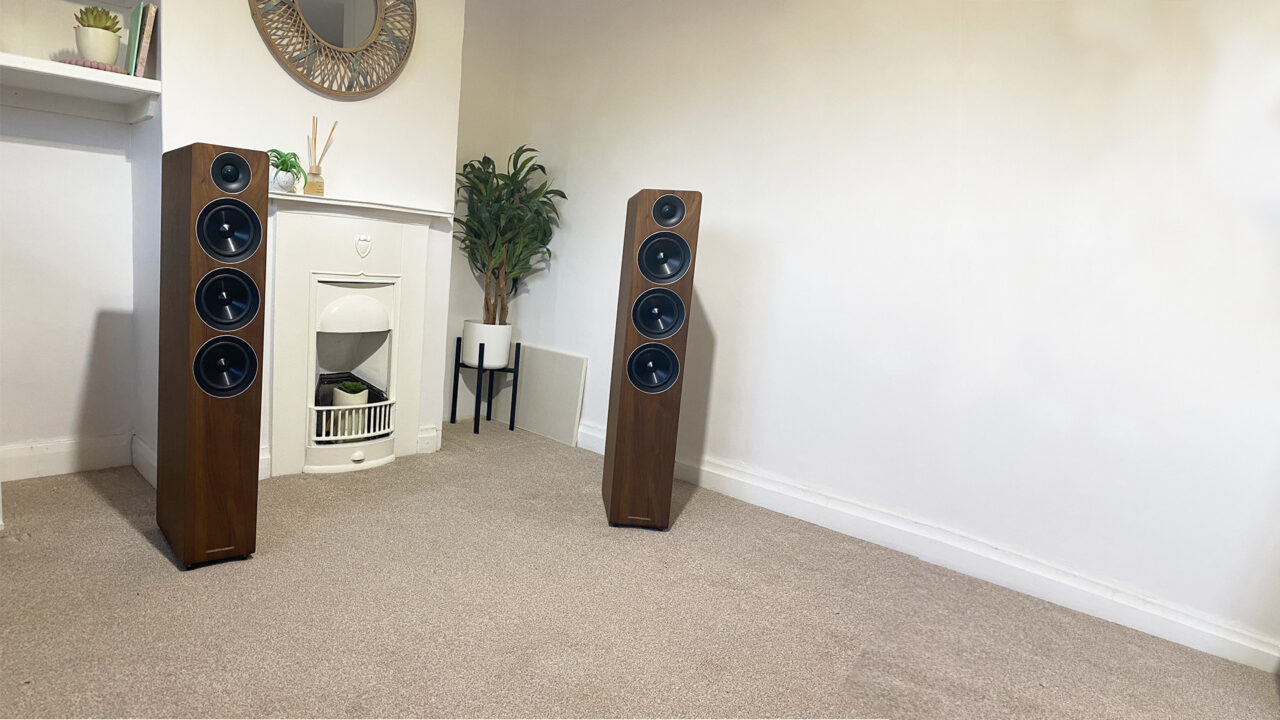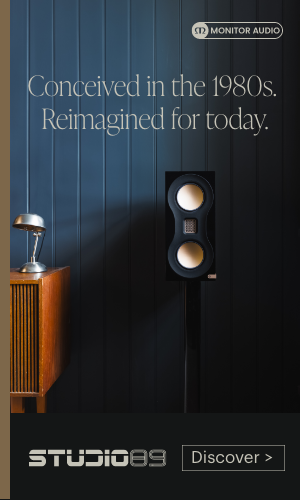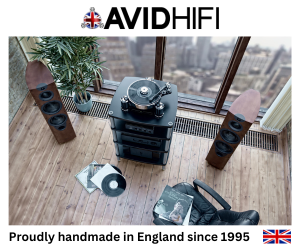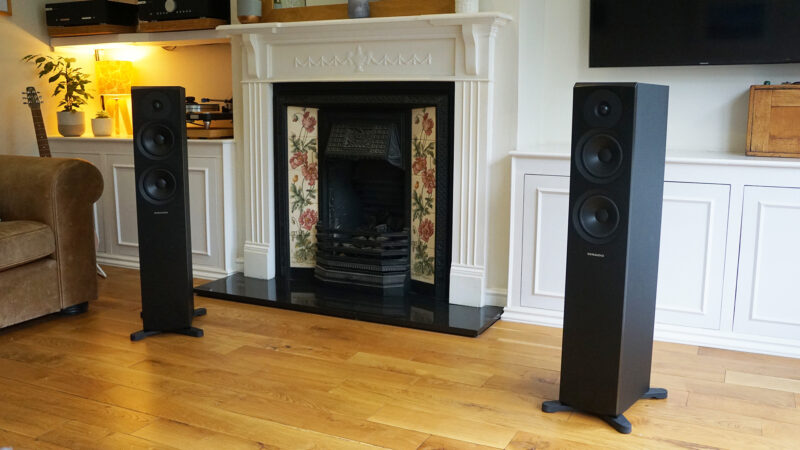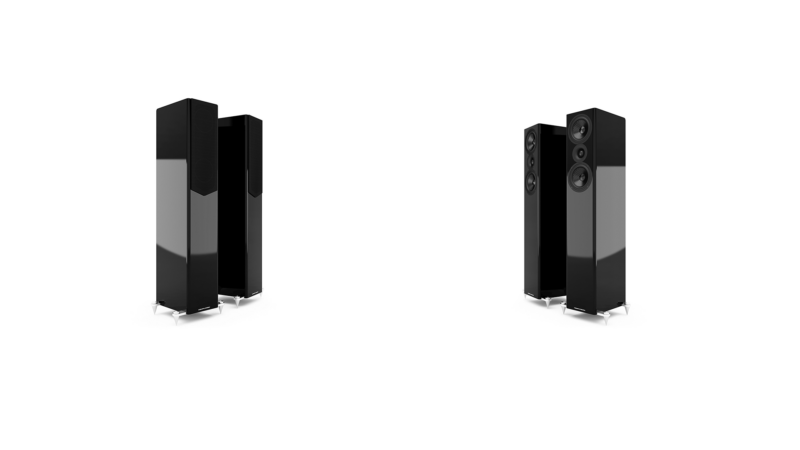Acoustic Energy is a brand that continues to enrich its product range to create greater choice for the hifi fan. In the three and a half decades since it burst on the scene with its seminal AE1 standmount speaker, this UK company has garnered plaudits from hifi fans and reviewers alike, setting the bar at a level of expectation that it continues to meet. Since its launch it has seen its ownership change and come back in house with its headquarters moving from London to the Cotswolds. Along the way it has also grown its offerings from budget to premium, offering more choice to a range of budgets.
Sitting in the mid price-point is the AE300 range of speakers, with the flagship AE320 floorstander topping the bill, which is reviewed here. Conceived to fill the sizeable gap in the range between the AE309 and AE509 2.5 way floorstanders, prices start from £1,599 for the piano gloss black or white finishes or £1,699 for the walnut wood veneer of our test units.
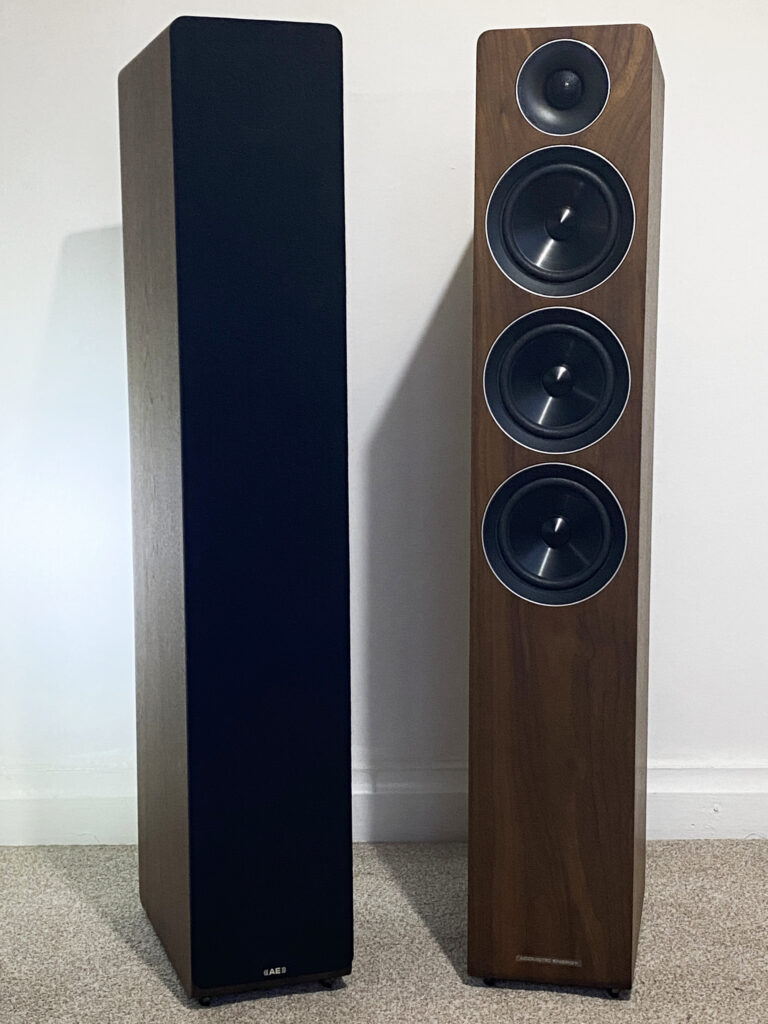
The AE320 comes supplied with full height magnetically attached grilles
The main difference between AE320 and its smaller brother is that the former is a three-way design with the addition of a third 130mm driver, with two units exclusively serving bass frequencies and the third serving midrange. Adding this extra air-beating hardware means an increase in height too (and cabinet volume), with the AE320s standing at 1,000mm (100mm taller than the AE309). Aside from these differences, they share features common across the range including a 28mm ceramic aluminium sandwich dome tweeter which incorporates wide dispersion waveguides to broaden the listening sweet spot. Also carried over is the inert 18mm high density fibre (HDF) cabinet design with rear slot ports and bracing that traces its ancestry from the reference series. This combined with the inert material housed in the base of each speaker helps to minimise sound colouring from the cabinets and contributes to their substantial weight of 26kg per unit. Each speaker is supplied with four 8mm floor spikes to ensure a sturdy foundation.
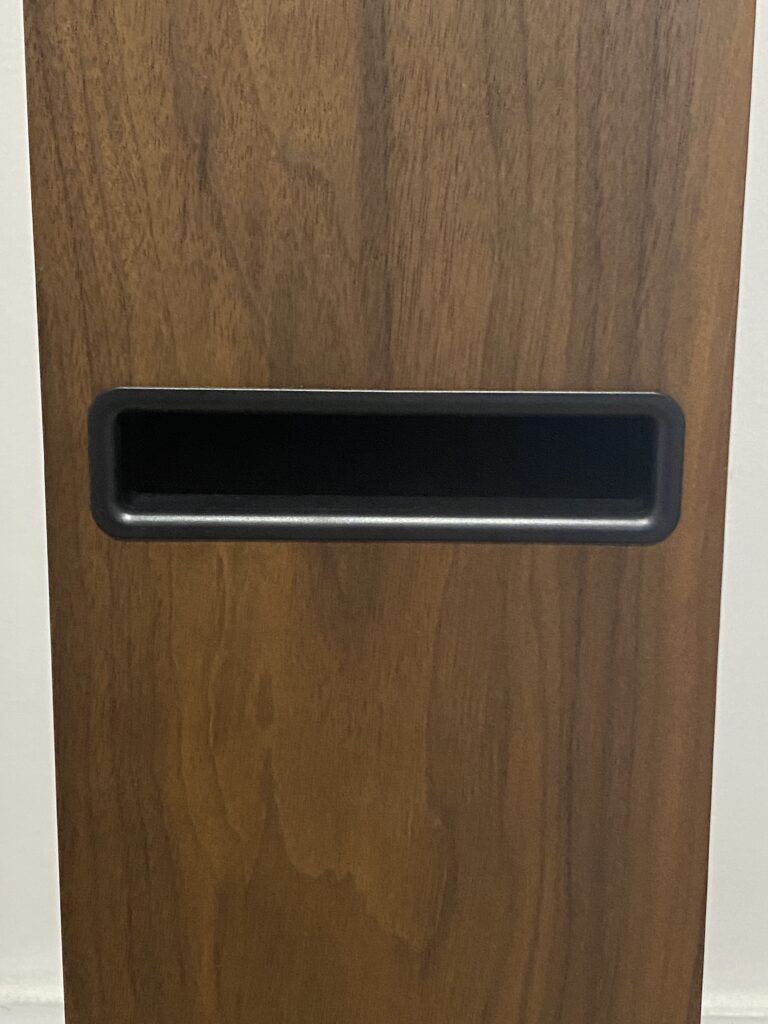
The slot shape bass ports are carried over from the rest of the range and enable closer positioning to room perimeters without ‘chuffing’
The additional firepower of the low end drivers is borne out in the 320’s specs with its bass starting at 35Hz (3Hz lower than that of the AE309s). Midrange takes over at 380Hz before rolling off to allow the tweeters to cover the treble frequencies above 3.4kHz. Power handling is a generous 200W but sensitivity is even more impressive at 90dB, meaning that the partnering amplifier doesn’t need arc welding muscle to get these speakers stretching their legs..
The build quality and choice of materials are also impressive given the 320’s mid range credentials with only the absence of features such as carbon fibre driver construction revealing their slightly more humble origins. Their handsome slimline design also enables the 320 walnut clad carcasses to slot seamlessly into my mid-sized living room without causing any domestic woes or overly dominating the space.
Performance
I set up the AE320s 2.5 metres apart, firing down my living room with a small degree of toe-in and half a metre of space behind them. After giving them several days to run in and with no company other than my dachshunds to temper my twisting of the volume dial clockwise, it was time to hone in on their sonic capabilities.
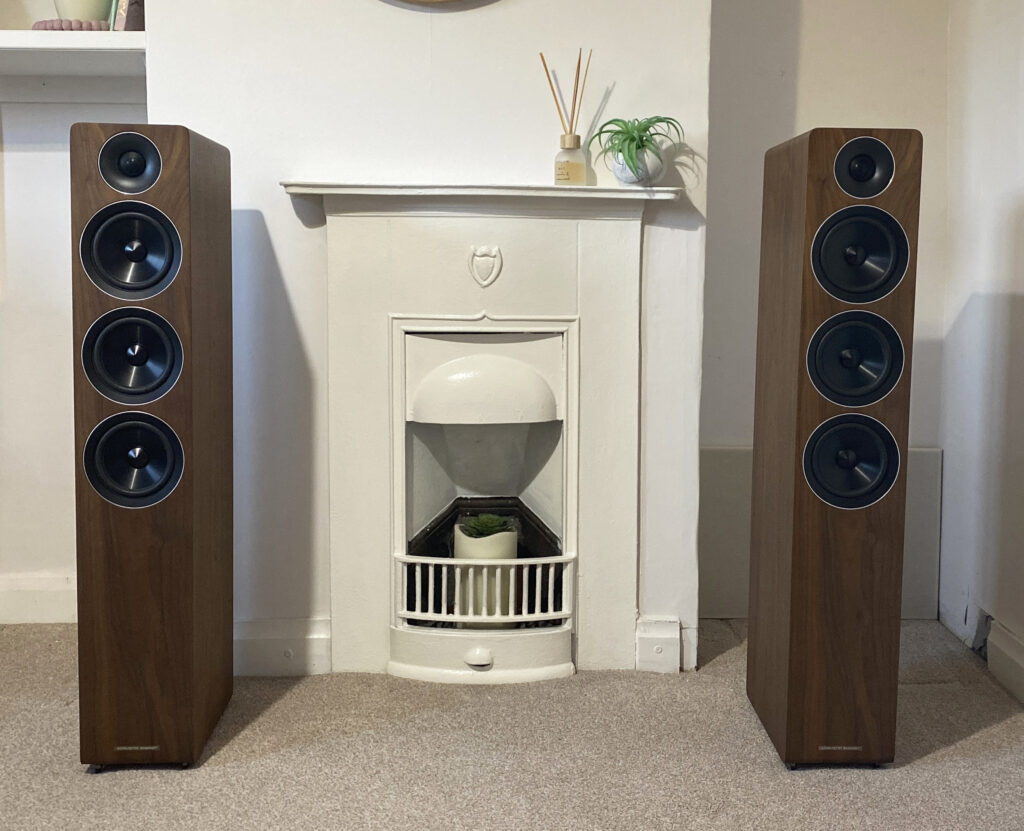
The 130mm aluminium mid-bass drivers are built around a ceramic aluminium sandwich cone and long throw motor system
Partnered with my longstanding Arcam A85 amplifier with a VPI Player turntable connected, I get the vinyl spinning with the frenetic drum and bass spiced Sue (Or a season of Crime) from David Bowie’s epitaphic Blackstar album to put the 320s’ dynamics to the test. Bowie evidently told the band to really go for it during this recording, with 170BPM laced over a 4/4 time signature, it is a real test of a speaker’s grip and timing. The AE320s rise to the occasion with ease and barely seem to break sweat, producing ground shaking levels of bass without compromising the clarity of every frenzied drumbeat, with impressive response and attack. In the midst of the tense rhythm section the speakers still allow my ears to be drawn to the more subtle elements of the recording such as the guitar work, and Bowie’s own vocals are by no means overwhelmed. Lesser boxes can render this complex recording a sonic mess and it is to the AE’s credit that the juxtaposition of orthodox timing and chaotic drumbeats results in an experience that truly beguiles.
At the other end of the intensity scale but by no less demanding on a speaker’s delivery is the cool Jazz sounds of Dave Brubeck and his Quartet’s seminal 1959 Time Out LP. Here my focus shifts to how the high frequencies are handled with the track Take Five, with the speaker’s potential being apparent from the outset in how they handle the drum brushes to set the scene for the familiar piano motif, before the saxophone takes centre stage. Also evident is a beautifully detailed soundstage with each member of the quartet being clearly placed in my living room regardless of where I place myself, credit seemingly due here to the tweeter’s wider dispersion waveguide characteristics.
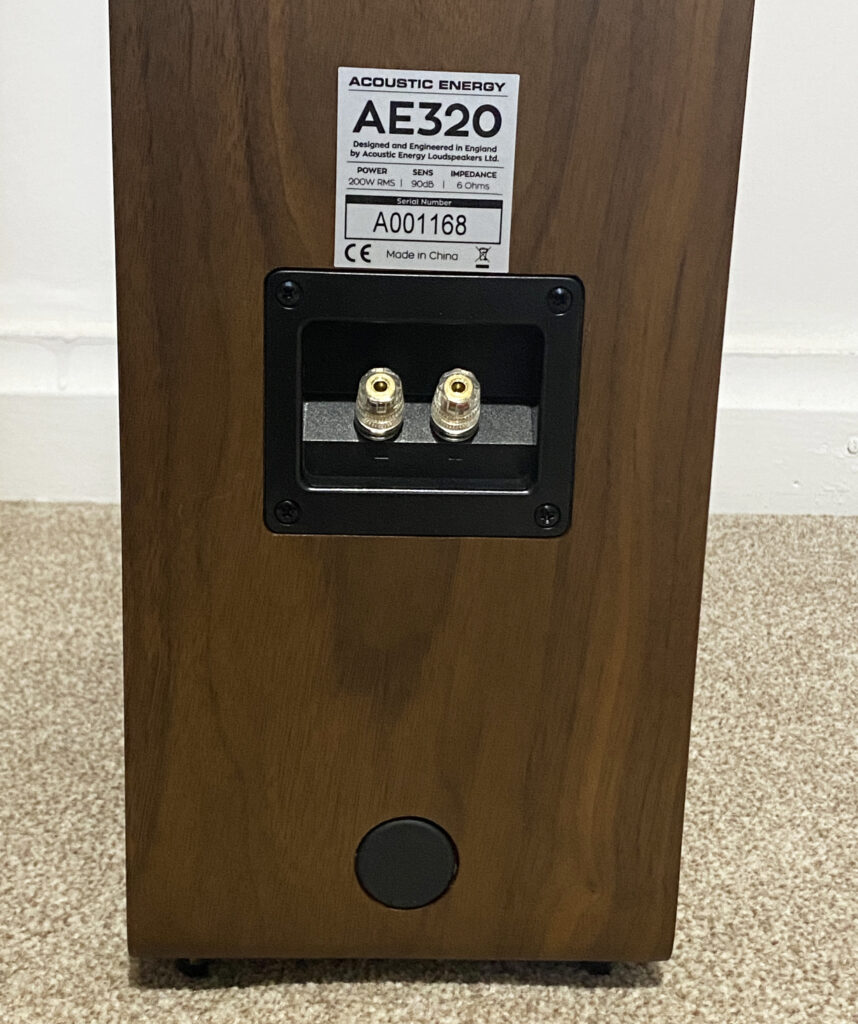
A single set of multi-way binding posts cater for spades, banana plugs and bare wire
Digital recordings are presented with equal finesse, when serving up a 24-bit/44kHz file of the wonderfully mellow Surjan Stephens/Angelo De Augustine collaboration album A Beginners Mind via my Cambridge Audio StreamMagic 6 v2. Within the track Lady McBeth In Chains and its delicate guitar and vocal harmonies there is always a risk that the relaxed but prominent chorus bass line drowns out the subtler elements of the song, but instead the AE320s ensure that the rich tones act as a pedestal to place focus on higher frequencies rather than acting as a blanket to suffocate them. Clearly decoupling the two lower bass drivers has paid off in the clarity and separation stakes. Whatever the science behind it though, the results truly reward the listener.
In Summary
Acoustic energy has once again delivered on plugging a gap in its range for anyone looking for a mid price three-way speaker that delivers on quality while being easy to drive from even moderately powered amps. True, they eschew premium materials such as carbon fibre drive units but their looks will still complement any living room without dominating it. More importantly though, these speakers serve up cohesive and immensely rich sounds across the frequency range with a mature weight and balance, making them outstanding value for the money.


